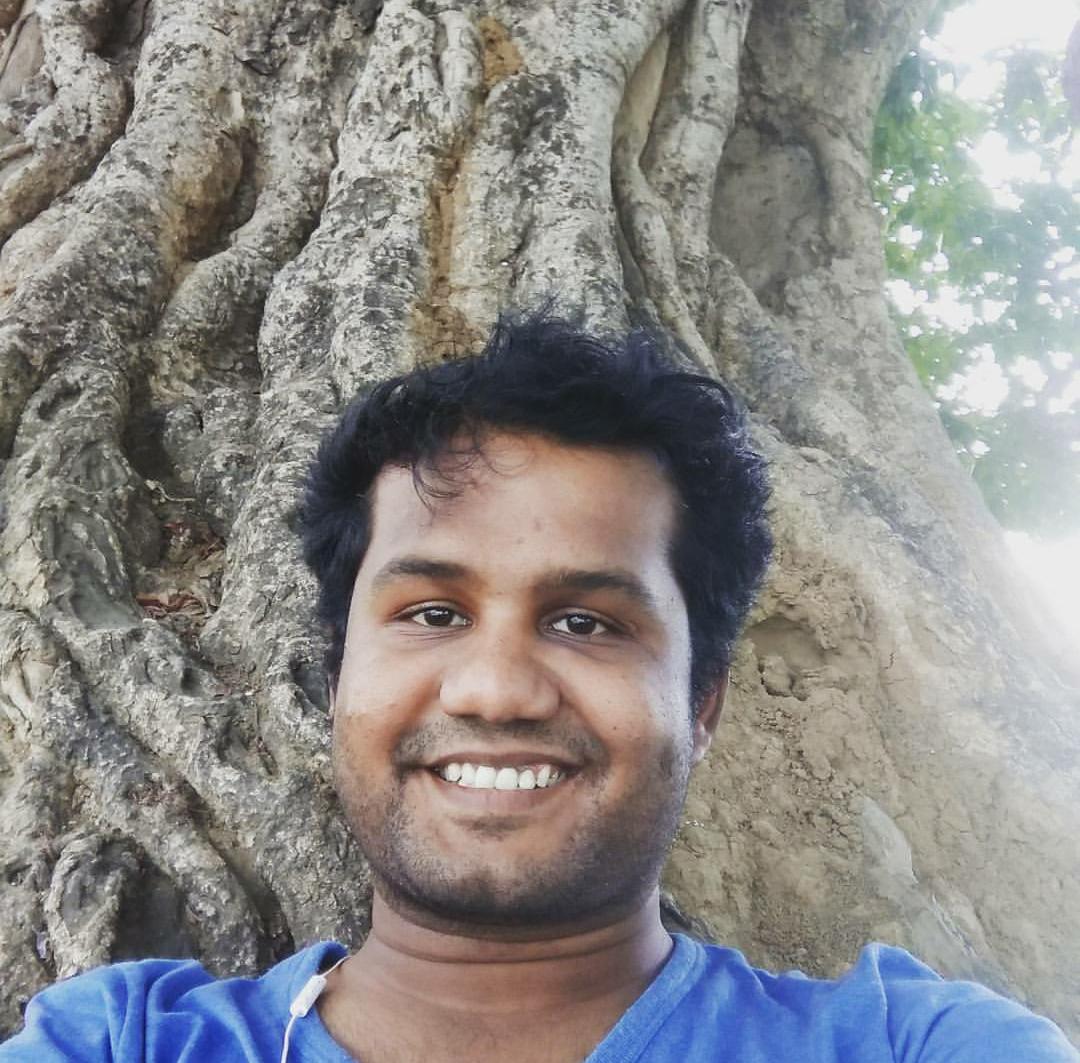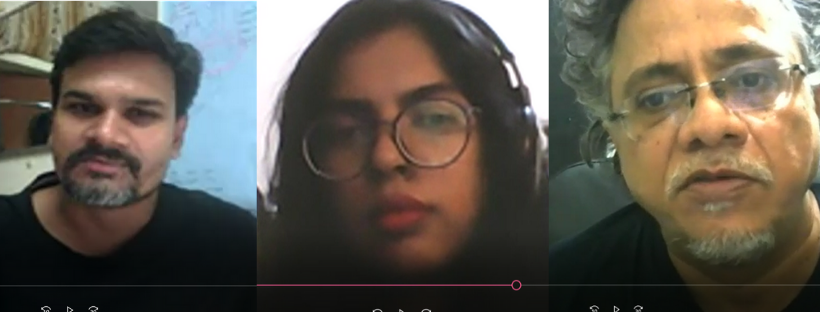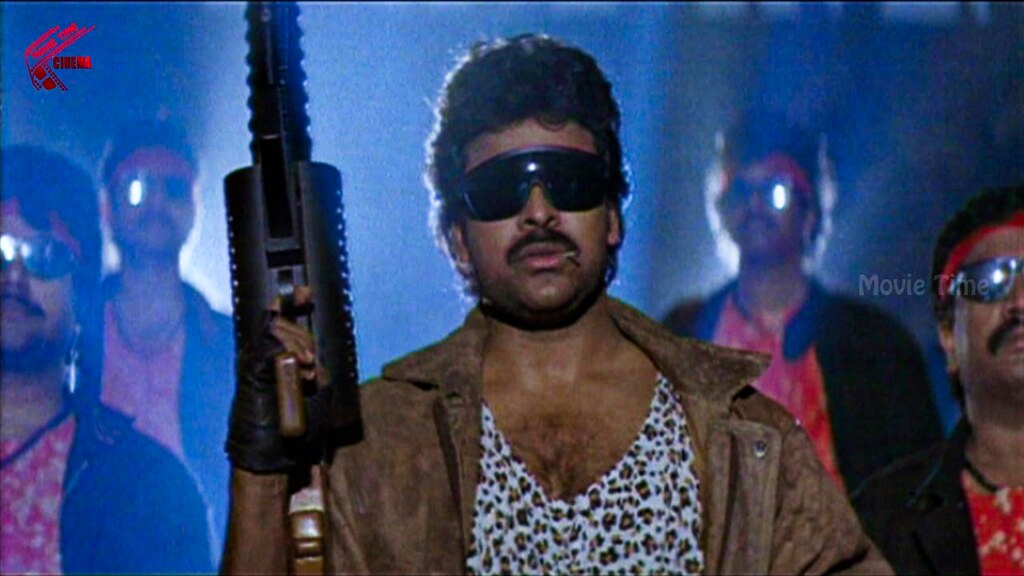Gaurav Somwanshi

In this piece, I seek to outline some questions that arose in my life or I have seen them arise around me, questions which may contain within them their own pitiless answers that form the weather and climate of this caste society. While for some questions, I may not have any answer. I do not wish to be merely rhetorical because I find myself entangled in the cobwebs that hang among these question marks, and I think many would relate to the conditions outlined below. Many others, with more experience and clarity than me, could help to define them more clearly if not resolve them.
1. There was a ‘tradition’ in Maharashtra (and I hope I’m justified in saying ‘was’) wherein, before beginning the construction of a building, a waada, or any large structure, a person belonging to the Mahar or Matang/Maang caste would be buried alive in its foundations.1,2,3,4 They would be made to swallow a mixture of oil and shendur (a mixture used for religious offerings) rendering them voiceless, lest their screams disturb the decorum of the happy gathering, and brick after brick would be laid around them while the person would be buried alive. Why? Because there was a belief that the strength of the Mahar or Matang/Maang would be absorbed by the building and it would last longer. Such beliefs weren’t even considered to be derogatory in a sense as the perpetrators sincerely believed that they’re ‘acknowledging’ the ‘strength’ of the Mahar or Matang/Maang even if it meant dehumanizing them to the point where the human being was indistinguishable from cement or brick. So there was this ‘evolved’ societal sentiment and force where they could openly murder humans as an acceptable cultural practice, by making them into a product and consuming them. My first question has its roots here.
Why begin with an example that is so brutal and macabre? Firstly, I don’t think of it as a ‘brutal example’, this is the reality and I didn’t make it brutal. Secondly, because I believe, and my belief stems from my experience, reading, and majorly from the brilliant teachings of Ambedkarite thought leaders and peers on social media, that a caste society essentially remains as what it is, which is a caste society. You can give it the cloak of capitalism, communism, or socialism or you can decorate it with the sparkling polish of democracy, a dash of savarna feminism, or even from time to time perfume it with outrage over fascism, and yet, it still functions as a caste society. The system reproduces itself through the caste mode of production, both materially and ideologically, all the while assimilating within itself any opposing or denting forces, demolishing what it can’t risk touching, and appropriating what it can’t demolish.
So how does the aforementioned tradition look to me, today? To me, at least, it looks like the rampant epidemic of tokenism that has been shaped by NGO, media and academia alike circling around the word ‘Dalit’. As I’ve written before, what was meant to be a political assertion has been subverted to become a tool in the hands of the Brahmin-savarna who use it to demolish both the ‘Dalit’ and the overwhelmingly populous non-dalit lower castes in one fell swoop. That’s why, without fail before beginning a conference, seminar, a new department, an NGO’s project proposal, a political party’s manifesto, a ‘respected’ journal’s dedicated column, or even a movie like ‘Lagaan’ for that matter, it becomes customary to include a Dalit character in order to certify oneself as progressive or ‘pro-dalit.’ Mind you, this isn’t representation where people belonging to Dalit community would be given a chance to exist as equals in the spheres of power where hitherto Brahmin-savarna would dominate in absolute numbers. This is tokenism, a very dehumanizing tokenism, where one has to exist as a ‘Dalit man’ or ‘Dalit woman’ alone, in stark contrast to the other ‘humans’ that s/he is sharing the dais with. Like a ceremonial object presented to the world to speak her or his ‘Dalit’ experiences, akin to lighting the lamps, before the Brahmin-savarnas would begin their liberal yagna. Yagna whose fire would need to burn the Dalits’ humanity in order to continue burning. Is my comparison too harsh?
2. ‘Pujiye bipra sil guna hina
Sudra na gun-gyan pravina’
(A Brahmin must be worshipped even if he is devoid of virtues, but never a shudra, no matter how distinguished he/she is) ~ Tulsidas, ‘Ramcharitmanasa’5
‘And for you the question has been morals. I never wanted to be the most moral person in the world.’ ~ Nikki Giovanni6
स्वजातीची चुकती परतुनी करती समजुती
शिक्षा बोधने करती
परकी मुले चुकता चपट्या गुद्या मारिती
जोराने कान पिळती
शूद्र लेकरा मुका मार देऊन पळवती
(When the Brahmins find their own kids doing wrong,
they’ll correct and teach them with patience
When they find other’s kids being wrong they’ll slap and punch
cruelly twist their ears
And kick away the shudra children leaving them with invisible wounds)
~ Jyotiba Phule’s ‘powada’ titled “Our Brahmin ridden Policy-Educational system”7
I don’t believe that anyone wants to be evil, or believes oneself to be so, and I think almost everyone would want to better themselves. But is it easy to be good in a world that essentially requires you to be anything but? To be born in a caste society with inhumane structures and legalized looting going under the perverse name of privilege (as Kuffir points out here)8, one faces not just the external evils surrounding your every step, but also evils that pollute your inner-self, like being made to gulp some intoxicating drug. Add to that the very human errors that come through the simple virtue of being a human. And one has to fight it all, or at least one must want to. The desire to fight these evils both within and outside, the struggle to unlearn a lifetime of callous attitudes, the resolves to not repeat earlier mistakes made in ignorance, all and more of these form the very natural course of being a human. Or they should. But even freedoms follow caste.
Here, again, being made into a commodity, placed on full display in the museum of the Brahmin-savarna, the Dalit is always under the spotlight. So, whether or not I want to be better, if I want to correct myself or not, this has never been the question. The question has always been, it seems, if I am ready to stand naked in their courts, offer a public confession that they have scripted in their theories but just want to hear it out loud. And then be made to speak on “behalf” of rest of the Dalits. This speaking on “behalf” of everyone else that comes under the label of ‘Dalit’ is what amounts to the grossest form of racialization. I have seen it happen with the best of people around me. As one author points out in the context of USA, racism isn’t just what happens to other blacks, but it also happens through blacks to other blacks in some cases (not by blacks, but through blacks).

(‘Gaze Chamber’ ~ Pinak Banik)
As Anu Ramdas points out how it functions in academia,10 “Institutions and classrooms have no place for our history, immediate concerns or our aspirations. As a consequence, knowledge about ourselves and about each other remains partitioned and inaccessible. And like immigrants in our own country, we find ourselves consuming and regurgitating the dominant brahmanical worldview. In which, indignity and inequality towards fellow citizens are normal. Which means we have to participate in upholding the exclusionary principles against our own communities and others in return for marginal acceptance or existence within ‘modern and secular spaces’? This is a trap to silence our voices against caste prejudice, hostility, violence and the willful ignorance of entire communities.”
It’s almost as if the Brahmin-savarnas of this nation will grant their (superficial) pity for you only if you tick mark everything on their never-ending moral checklist, and the instant you’re found to deviate, the public flogging begins. And the apology or confession has to be under their gaze, under their supervision, as if they are the signatories on everyone’s character certificate. Notice that they get to this without ever having displayed any evidence to support their claim to be moral superiors; instead, the claim is inferred directly from racial diktat.
Is this racism? Indeed, it is. Because this isn’t someone from the oppressor community doing a little bit of whistleblowing, but this is the same traditional repetition of the norm where the untouchable would have to walk with her or his eyes glued to the ground in the presence of a Brahmin-savarna in order to prove their ‘civility’. And the mere act of a public flogging done by keeping only the ‘Dalit’ part of identity in spotlight inevitably leads to racialization of the rest, and I really do mean inevitably. So you get a real situation where the descendants of the Peshwas feel absolutely no qualms in continuing their same murderous ideological tradations as though being normal actions, while at the same time repeating red-herring mantras of “brahmins are different from brahminism”, and chants of “reverse-racism”.
Let me take a step back to reiterate how racism works and how ridiculous is the notion of reverse-racism.
The words hurled in criticism against the Brahmin-savarna end up hitting the protective cocoons they are nested in. And these cocoons are made of multi-layered fabric: hoarded resources, social and cultural capital at the expense of everyone else’s, vast interlinked networks of powers, prejudices arising out of ignorance or conscious intention which both end up solidifying the status quo, even occasionally proving deadly to the rest of the bahujans, and the power and wherewithal to reproduce the caste mode of production under various forms. To not even name these specifically and talk about the Brahmin-savarnas ensures that only the cocoon gets hit.
What happens when the same is done against the oppressed? What cocoons are they protected in? Whatever is said, written, or even felt about the oppressed has its impact directly upon who they are. Because their souls, in a non-religious sense, is all that they really have. So racialization for the oppressed is as easy as much as kerosene is inflammable.
One story of Eklavya and the entire group is made to feel that they are not eligible to learn archery, one news headline of a criminal from the oppressed group and everyone else has to feel apologetic and also express it loudly. It works in a reverse way for the ruling classes where they will elevate their talents to exaggerated heights and shift+delete any of their member’s mistakes as solely individual mistakes with no bearing on their caste/class/community so that only the positive connotations are carried forward regardless of realities. In contrast, the oppressed groups are forced to carry the collective burden of enforced stereotypes as well as individual mistakes upon their shoulders till their dying breaths and even beyond the grave.
At such times, how does one seek and attain sincere self-improvement when the rest of this caste society doesn’t really seem to be interested in it? How does one excavate oneself from the racial avalanche that tells you what you are and what you should feel based on your birth?
Also, to the Brahmin-savarnas, the Dalit may humanise themselves out of this trap, but the question is will the Brahmin-savarna humanize themselves? Because until that happens, the process of dehumanisation will persist.
3.
तुडवाया टपले तुला
वैरान रानच्या मुला
ही जान असू दे तुला
रे भीमरायाचया मुला
सांगणे भिमाचे तुला,
सांभाळ तुझ्या घरकुला
सांभाळ प्राण आपुला रे
लाडक्या भीमाच्या मुला
वामनच्या फुलत्या फुलं
कर तळ हाताचा झुला रे ~ वामनदादा कर्डक
(They are inching to crush you,
My dear child of this lost land,
Please know of this, never forget,
my Bhima’s (Babasaheb) child
Bhima says to you,
Look after your family,
And please look after your life
You are Bhima’s dear child,
You are Waman’s budding flower
shelter your life in your own palms)
~ excerpts from Wamandada Kardak’s Swaabhimaani (Self-respect) song ‘My Bhima’s child’11
This question is about Dalit suicides. As Anoop Kumar and Gurinder Azad have detailed in their work, ‘The Death of Merit’,12 and as I’ve witnessed myself, the brahminical system’s education institutes act as torture cells for students from marginalized groups. This was detailed in Jyotiba Phule’s works where he urged to get rid of the Brahmin-savarna schoolmasters. But apart from that, does the very term ‘Dalit suicide’ has to do something with it? I don’t mean it in the sense where an upper-caste would brush off issue of caste saying “we’re all humans” but I mean it in a radically different sense.
It has been my experience and observation so far that most of the liberal-minded upper-castes of India, or the ones claiming to be so, really can’t handle a Dalit who’s fighting to be an equal human. They just can’t. But what they really embrace with open arms is a human being who’s tweaked and morphed themselves into their convenient caricature of what they have defined to be a ‘Dalit man’ or a ‘Dalit woman’. Then they’ll give you columns to write in, international academic opportunities under their gaze, fancy conference invites, a barrage of ‘heart emoticons’ on social media, and an applause that would shame a rock-star. These liberals, not all but most (I have to clarify because some of them are thinking “reverse racism” as they’re reading these lines), these Brahmin-savarna liberals realise that as most of the Dalits are coming from a surrounding where acknowledgement and appreciation has been acutely denied by the asphyxiating atmosphere of a caste society, they could use this to bait them into saying, doing, and even becoming what they want you to become for their own benefits. I say this because I’ve too said, done, and even momentarily become their version of a ‘Dalit’.
You may spend your life in anti-caste activism and all you will get from them is either scorn or neglect, but the moment you’re dead they will be the first to claim solidarity. Because the most convenient tool in their hands is a Dalit corpse. Then they’ll frame theories around us, attack political parties they dislike using us, publish anthologies on the same, and create a grieving scenario that has less to do with what killed the person and more to do with how much brownie points can be derived by crying loudly. A case in point could be what they did with Rohith Vemula.13
Given that the texture of the land is such, is it really surprising that Dalit suicides are fertilized by it? If these are the incentive mechanisms of this caste society, doesn’t the Brahmin-savarna pity that’s exclusively reserved for dead Dalits, and their scorn reserved for the alive ones, be responsible for the suicides too?
Disclaimer: The views mentioned in the article are strictly personal.
~~~
(Part 1 of 3) To Be Continued
References
1. “भारतीय अस्पृश्यतेचा प्रश्न“,ले. रा. वि. शिंदे, १९७६, पृ. १६२ (L.N.R. Shinde, “The question of India’s untouchability”, 1976, pg. 162).
2. “पुणे वर्णन“, ले.ना.वि. जोशी, सं.ग.दे. खानोलकर दुसरी आवृत्ती, १९७१पृ. १९ (L.N.V. Joshi & S.G.D. Khanolkar, “Pune varnan”, Second Edition, 1971, pg 19).
3. दैनिक, “तरुणभारत” दि. २६—६–१९८५ (Newspaper ‘Tarun Bharat’, dated 26-6-1985).
4. “महार–मांग संबंध“, प्रा. बी. सी. सोमवंशी, दुसरीआवृत्ती, पृ. ५७ (“Mahar-Maang Dynamics”, Prof Bhanudas C. Somwanshi, Second Edition, pg 57)
5. Prasad, R.C. tr., Tulsidas’ Shri Ramchatirmanasa, Delhi: Motilal Banarsidass, 1990.
6. Nikki Giovanni & James Baldwin, A Dialogue, transcript of their conversation which was taped for the television program “Soul”, and first shown in United States on WNET-TV, Dec 1971.
7. Author’s translation of original lines by Jyotiba Phule, from समग्र वाङ्मय: महात्मा फुले, संपादन: डॉ. प्रतिभा अहिरे, औरंगाबाद: साद प्रकाशन, २०१३ (Jyotirao Phule, Collected Works of Jyotirao Phule, Edited by Dr. Pratibha Ahire, Aurangabad: Saad Publication).
8. Accessed on 18th August, 2017 Accessed at http://roundtableindia.co.in/index.php?option=com_content&view=article&id=9156:bahujans-and-progressive-brahmins-adversaries-not-allies&catid=119:feature&Itemid=132
9. Accessed on 18th August, 2017, accessed at https://www.theatlantic.com/politics/archive/2014/12/black-on-black-racism-the-hazards-of-implicit-bias/384028/
10. Accessed on 18th August, 2017, accessed at http://www.dalitweb.org/?p=1021
11. Satish Waghmare’s translation of Vamandada Kardak’s poem. From तुफानातीलदिवे: वामनदादा कर्डक यांची स्वाभिमानी गीते, औरंगाबाद: कौशल्य प्रकाशन, २००९, पृ. ५५ ‘भीमरायाच्या मुला‘ (Vamandada Kardak, Burning lamps of the storm, Aurangabad: Kaushalya Prakashan, 2009)
12. Accessed on 20th August, 2017, accessed at https://thedeathofmeritinindia.wordpress.com/
13. This article is prime example of how the “progressive” Brahmin-savarnas tried to capitalise on Rohith Vemula’s death: Accessed on 20th August, 2017, accessed at https://www.outlookindia.com/magazine/story/how-i-killed-rohith-vemula/296478
~~~
Gaurav Somwanshi is a Consultant in the public sector, IIM Lucknow alumnus, Blockchain Technology enthusiast, independent social activist, and researcher.
Image from ‘Gaze Chamber’ (Digital Montage, Work in Progress) by Pinak Banik.










